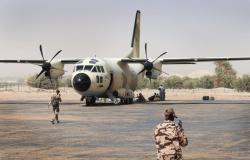Dakar, Nov 5 (APS) – Senegal must further integrate the issue of climate vulnerability into its public policies to give substance to its ambition to become a middle-income country by 2050, declared Tuesday in Dakar, the environmental projects manager at the World Bank, Arame Tall.
“The government’s 2050 agenda cannot be realistic without taking into account Senegal’s climate vulnerability,” she said during the official launch of the World Bank’s Climate and Development Report (CCDR).
“To achieve this objective, insisted Arame Tall, it will be necessary to take into account the climatic dimension and at the moment when the Senegal of 2050 is being established, the integration of the climatic vulnerability of the country requires a paradigm shift”.
The integration of the problem of climate vulnerability must go hand in hand with the conduct of a certain number of reforms aimed at accelerating the growth rate, increasing GDP and reducing inequalities and poverty, a- she indicated.
The Minister of the Environment and Ecological Transition, Daouda Ngom, as well as several officials from the regional office of the World Bank were present at the launch of this report according to which “75%” of the coasts are under the threat of coastal erosion .
“In Dakar alone, the population is exposed to flooding by 2050, and 65% of the country’s population, by 2050, risks being flooded,” she added, citing this report.
According to Arame Tall, “the cost of inaction in the face of these natural phenomena is no longer an option for countries like Senegal”.
“Without an effort to adapt today, the cost will be higher and Senegal risks losing 3 to 4% of its gross domestic product by 2030, therefore within 5 to 6 years, and by 2050 up to 9.4% of its GDP”, warned the manager of environmental projects at the World Bank.
She maintains that the cost of inaction on poverty will be “greater, with just over 2 million Senegalese who risk falling further into poverty due to climate shocks”.
“However,” she said, “if Senegal can act now, it will be possible to reverse these trends and instead of incurring losses, they must be transformed into advantages and gains.”
In this perspective, continued Arame Tall, the adaptation measures modeled in the report “can significantly reduce losses linked to climate change, with GDP gains of around 2% already by 2030, for the Senegal”.
The Minister of the Environment and Ecological Transition, Daouda Ngom, deeming this World Bank initiative “salutary”, recalled “the urgency of mobilizing around the issues of climate change”.
“This national report on climate and development provides an unequivocal diagnosis of Senegal’s vulnerability. It is an essential tool to raise awareness and mobilize all stakeholders, decision-makers, citizens, the private sector and civil society, on the importance of building a more resilient and fairer future,” he said.
“This report is therefore a call to action to preserve our country and our planet, but also future generations,” he added, stressing that “the Senegal 2050 approach calls for an ecological transition that mobilizes the all the actors”.
“In this dynamic, we must take collective measures to mitigate greenhouse gas emissions. And strengthen national resilience while promoting more sustainable and environmentally friendly economic models,” he recommended.
“Senegal 2050, national agenda for transformation” is the new framework for public policies officially launched on October 4, 2024 in Dakar by the President of the Republic, Bassirou Diomaye Faye.






